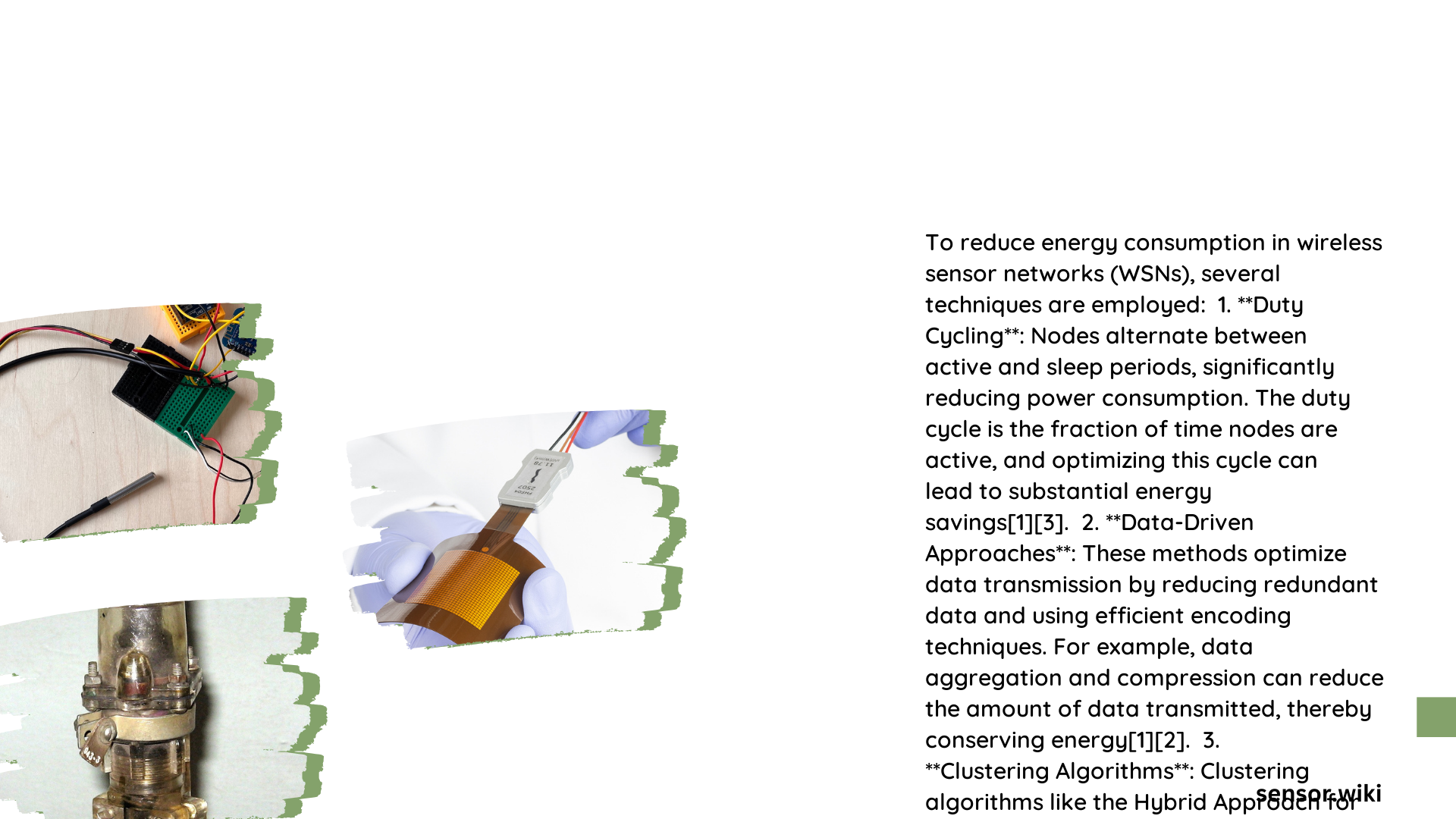Wireless sensor networks (WSNs) face critical challenges in energy management, with limited battery life and power constraints threatening network performance and longevity. Innovative approaches like adaptive routing protocols, intelligent clustering mechanisms, and advanced energy harvesting techniques are revolutionizing how we minimize energy consumption, enabling more sustainable and long-lasting sensor network deployments across various applications from environmental monitoring to industrial automation.
What Are the Primary Challenges in Wireless Sensor Network Energy Consumption?
Wireless sensor networks encounter multiple energy efficiency challenges that directly impact their operational sustainability:
Key Energy Consumption Challenges
- High power requirements for data transmission
- Limited battery capacity
- Continuous monitoring and communication demands
- Uneven energy distribution across network nodes
How Can Routing Protocols Optimize Energy Efficiency?

LEACH (Low Energy Adaptive Clustering Hierarchy) Protocol
- Cluster-Based Approach: Divides network into dynamic clusters
- Energy Distribution: Rotates cluster head responsibilities
- Performance Benefits:
- Reduces long-distance transmissions
- Distributes energy load evenly
- Minimizes global network knowledge requirements
Comparative Protocol Performance
| Protocol | Energy Savings | Complexity | Scalability |
|---|---|---|---|
| LEACH | 50-60% | Low | Medium |
| LEACH-C | 60-70% | Medium | High |
| EERPMS | 64.50% | High | High |
What Energy Harvesting Techniques Enhance Sensor Network Sustainability?
Solar Energy Harvesting
- Conversion Efficiency: 15-20%
- Energy Output: 10-20 mW per cm²
- Advantages:
- Renewable source
- No additional infrastructure required
- Consistent energy generation
Thermal and Kinetic Energy Options
- Thermoelectric Generators:
- Conversion Efficiency: 3-5%
- Energy Output: 1-10 mW
- Piezoelectric Harvesters:
- Conversion Efficiency: 10-20%
- Energy Output: 1-100 μW
How Can Sleep Mode Optimization Reduce Energy Consumption?
Strategic Sleep Mode Techniques
- Maximize node sleep duration
- Implement intelligent wake-up intervals
- Use localized flooding for routing maintenance
Energy Savings Potential
- Idle listening reduction: Up to 90%
- Collision avoidance: Significant power savings
- Latency management: Coordinated node synchronization
Practical Implementation Strategies
Recommended Approaches
- Implement adaptive routing protocols
- Integrate multiple energy harvesting techniques
- Optimize sleep mode configurations
- Regularly monitor network energy distribution
Technical Specifications for Low-Power Wireless Sensors
Typical Node Characteristics
- Operational Voltage: 2.7V – 3.3V
- Active Mode Consumption: 10-20 mA
- Sleep Mode Consumption: Few microamperes
- Communication Range: 10-100 meters
Conclusion
Reducing energy consumption in wireless sensor networks requires a multifaceted approach combining intelligent routing, energy harvesting, and strategic power management techniques. Continuous innovation in these areas promises more sustainable and efficient sensor network deployments.
